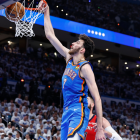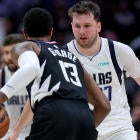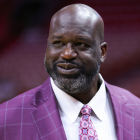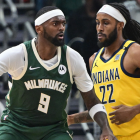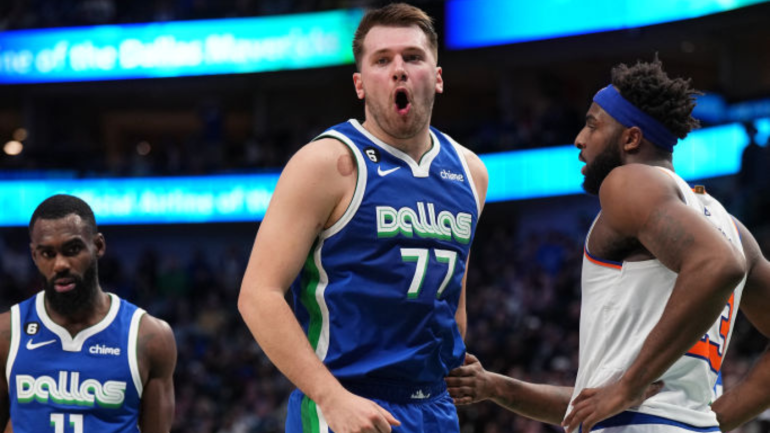
For more than 47 minutes, it looked as though Luka Doncic was headed for a 47-point disappointment. The New York Knicks led the Dallas Mavericks most of the way, and with 33.9 seconds remaining, Deuce McBride made two free throws to push New York's lead up to 112-103. Mathematically speaking, the odds of a Knicks victory were north of 99 percent. Historically, the Mavs' hopes were even dimmer. Over the past 20 seasons, teams trailing by nine or more points with 35 or fewer seconds to play held a record of 0-13,844. It's hard enough to overcome a nine-point deficit in 33 minutes. The Mavericks did it in as many seconds.
So how did it happen? Let's break down the final 33 seconds to figure out how Dallas pulled off one of the greatest comebacks in NBA history. We begin with the simplest play of the stretch. Christian Wood takes the ball down the court. He passes it to Tim Hardaway Jr. Hardaway passes it back. Wood fires for 3. The lead is cut down by one-third.
Here's where things get interesting. Julius Randle slings an inbounds pass to Quentin Grimes, but as soon as he turns around, Doncic is there to try to wrestle the ball away from him. He gets the jump-ball call.
Doncic wins the tip but passes the ball to Hardaway, who misses a 3-pointer. This is where the rather unique construction of the Dallas roster comes into play. Most of their big men can shoot. That includes Wood, who is being guarded closely by Julius Randle. With Randle occupied on the perimeter and Mitchell Robinson jostling with Dwight Powell, neither of New York's big men are able to block Doncic out on the other side of the court. He flies in off of Hardaway's miss, makes the putback, and draws the foul in the process.
McBride gets a point back on the other end with a free throw, and Dallas calls a timeout to set up an out-of-bounds play. Dinwiddie starts on the right block before trying to use a Powell screen to spring free from McBride. He can't, but with no timeouts and a five-second call looming, Doncic has to make the dangerous inbounds pass to him anyway. However, the pass is close to enough to the sideline that Dinwiddie can use Doncic as an impromptu screener. The traffic gives him just enough room to fire off a 3-pointer that cuts the lead down to one.
Another foul gives McBride two more chances at the line. He makes both. Dallas has no timeouts, so Doncic has to get the ball up court quickly. At this point, the game should essentially be over. The final seconds are ticking away, and with no timeouts, New York knows it can foul Doncic into two free throws rather than allow him to attempt a 3-pointer. They do so. It is the correct play. Even after he makes the first free throw, with only 4.2 seconds left on the clock, the game is essentially over. Until it isn't. Because Doncic did this.
In case this isn't clear, Doncic missed that free throw intentionally. Doing so is, in all honesty, more difficult than actually making it. For a missed free throw to be legally rebounded, it needs to hit the rim. So Doncic essentially needed to throw the ball off of the rim in a way that his teammates could feasibly rebound. As it turns out, he would be the one to catch it after it was batted by Randle. He quickly put the ball back up. Tie game, 115-115.
The Mavericks went on to win in overtime largely because they had Doncic and the Knicks did not. If they couldn't finish him with a nine-point lead in 33.9 seconds, they certainly weren't going to hold him off for five full minutes. As the Knicks learned on Tuesday, holding Doncic off for 47 minutes is no longer enough. Give him even a few seconds, and he will break your heart.















